Floor Screeding Chelsea Greater London (SW1): If you are renovating a property or basement, are planning to install underfloor heating or have an uneven or damaged floor, then you'll need to find a specialist floor screeding company to help you. To provide you with a good base for your choice of top flooring material, screeding is used to create a smooth floor surface on top of a rough concrete sub-base. Screeding a floor allows you to provide a high quality and durable finish for any room in your home.
FLOOR SCREEDING CONTRACTORS CHELSEA
Providing a superb level of service, a professional floor screeding company in Chelsea will have the appropriate expertise, know-how and equipment, regardless how large or small the area is that you require to be levelled. After a careful evaluation of your project, they will be able to inform you about which method of laying is most suitable for your floor, and what is the perfect choice of screed to use.
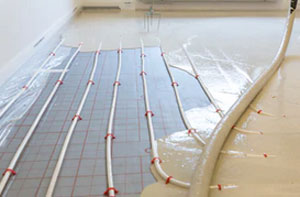
Your screeding specialist will also let you know if a structural engineer is needed for your undertaking, in order to evaluate flex strength, point loadings and load requirements that your screed floor might require to conform with current British Standards and building regulations.
Bringing in a highly trained and skilled contractor will ensure that you get the correct form of screed for the room's proposed usage to extend the lifespan of your flooring. Picking the appropriate screeding materials and the best installation technique is critical if you want to end up with a durable and quality finish for your floor.
There are several screeding contractors in the Chelsea area so try to get multiple estimates for your floor screeding project before choosing a contractor and know to what standard of finish is it for. For residential properties an estimate will generally be provided for an SR (Surface Regularity) standard of SR1 or SR2. Each of the 3 SR levels provide different standards of finish, with SR1 offering the best, with the smallest amount of deviation over the surface area. An SR2 or SR3 level may mean there will be flat spots or ridges that might cause issues when installing your final flooring surface (carpet, wood, tile etc).
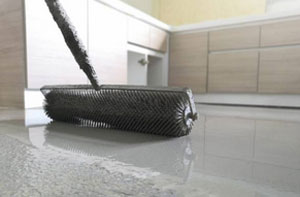
Every Chelsea screeding company must adhere to British Standards (BS8204) and ought to have accreditation from screeding material and equipment manufacturers, e.g. Gypsol, Cemfloor, Flowcrete. This accreditation scheme demonstrates a company's training and ability in the application of a manufacturer's products.
For larger floor screeding projects in salons, schools, hospitals, warehouses, shops and factories, dedicated Chelsea commercial screeders will be required.
TYPES OF SCREED
Standard Screeds - This is okay for regular domestic usage and is a blend of cement and sand. 5 parts sand to 1 part cement is the typical mixture for standard flooring screeds. After being laid a standard screed dries out at a rate of just 1mm/day.
Advanced Drying and Fast Drying Screeds - As the name suggest, this screed dries rapidly and allows you to use the floor area much faster. Most of the fast or advanced drying screeds are of the fibre reinforced kind and are appropriate for a wide array of projects where the quicker drying rate of 3-7mm/day is advantageous.
Industrial and Heavy Duty Screed - Where traffic levels are expected to be high or heavy loading on the floor is needed, heavy duty screeds provide maximum strength and durability.
Fibre Reinforced Screed - The expert's choice for domestic use on top of underfloor heating. The special fibres in the screed improve overall strength and durability while also protecting against thermal cracking and shrinkage. It's got a setting rate of one millimetre per day.
Liquid or Self-Levelling Screeds - When the highest possible standard of finish is needed this mixture of cement and latex is employed to achieve SR1 level screed flooring. It is largely needed to produce a clean, smooth floor over a damaged or poor quality substrate and results in a finish onto which all kinds of flooring materials can be laid. These can be as little as one millimetre thick, and because of the latex polymers, will still provide a high strength finish.
Polymer Screeds - An extremely high strength flooring solution where a reduced thickness is essential. The drying times vary in accordance with product guidelines.
SCREEDING PREPARATION AND INSTALLATION
Screeding installers will need to prepare all areas prior to any other work so as to ensure a high quality and hard wearing screed flooring. The existing floor surfaces should be thoroughly cleaned to eradicate any debris, paint, oil and grease which can adversely affect the bond of the screeding.
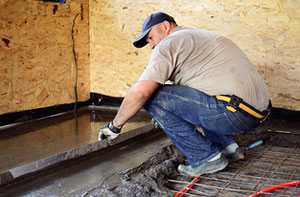
If cleansing products have been used it's essential to remove any traces of detergent, soap etc, and leave the floor surface to dry naturally. It is necessary to mend any crevices or cracks in the base to avoid them being mirrored and "travelling" up into your newly screeded floor. A professional Chelsea screeding company will address such problems during the site survey and make certain all preparations are complete before moving on to the next stages of the floor screeding process.
To shield the flooring materials and screed layer from moisture rising up from the ground, a damp proof membrane (DPM) must be laid. The damp proof membrane is made of thick polythene sheeting and different layers might be used to act as a moisture barrier and air insulating layer for the screed.
If the area where you live is susceptible to radon then an additional barrier is essential to stop the gas from entering from the ground. This can be just a simple air-tight membrane, or in severe instances an extraction and ventilation system will be installed under the floor screed to draw out any inflow of radon gas from the ground.
The final phase of surface preparation is the painting or spraying of a primer or sealant. Sealers and primers help with the bonding process and are special applications matched to the type of screed that is being used. Due to their specialist nature, only certified screeding specialists in Chelsea should be entrusted with using them correctly, safely and using bespoke equipment for the task.
If you are installing underfloor heating, this is the time that it will need to be properly set out and installed. The underfloor heating system is laid out in the correct pattern and firmly secured to insulation panels to stop potential movement during screed pouring. Warmth is spread evenly across the floor in an expertly fitted under floor heating system, and with it being an efficient choice of heating, it's a great choice for the majority of Chelsea renovation projects.
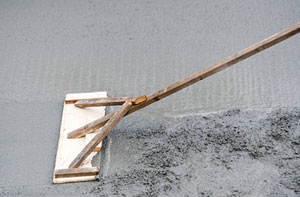
Naturally, if you are not putting in under floor heating, you can bypass this step and get on with applying the floor screed. The specific requirements of the room will determine the form of screeding that's used. For quick drying and advanced screeds there'll be at least twenty four hours delay before it is able to be walked on, and a further Three days minimum before any flooring material can be applied. If you are using heavy duty or standard screeds the drying time is longer and the manufacturer's guidelines must be adhered to so as to get the best finish for your floor.
The SR standard of your screed can be verified once it has hardened sufficiently to be stepped onto. The test involves the use of a two metre straight edge laid down upon the floor surface and any deviations from true are calculated.
- SR1 - SR1 is the highest quality and allows just 3mm of deviation from the straight-edge.
- SR2 - SR2 is the classification for normal standard floors in industrial and commercial projects and can deviate from the straight-edge by as much as 5mm.
- SR3 - For a utility area or room where the quality of finish is comparatively immaterial the SR3 is the classification and has a maximum deviation measurement of 10 millimetres or less.
If your screeding has been laid with particular load bearing requirements in mind then a structural engineer will be required to perform the tests. This assessment will ascertain the overall strength of the screed and the suitability for its intended use. The screed could be subjected to a drop hammer test to gauge flexibility and strength at specific points. Only certified structural engineers heeding the British Standards BS8204 regulations are permitted to carry out such testing and sign off on the structural integrity of screed flooring. (Tags: Floor Screeding Chelsea, Floor Screeding Services Chelsea, Floor Screed Chelsea, Screeding Chelsea).
Screeding services are available in Chelsea and also in: Knightsbridge, Sands End, Clem Attlee Court, Parsons Green, Coleridge Gardens, South Kensington, Worlds End Estate, Chelsea Harbour, Earls Court, Palace Green, Churchill Gardens, Walham Green, Abbots Manor, and in these postcodes SW10 0BH, SW10 0BA, SW10 0NU, SW10 0JF, SW10 0FD, SW10 0LN, SW10 0BP, SW10 0AN, SW10 0AF, and SW10 0HR. Local Chelsea floor screeders will probably have the postcode SW1 and the telephone dialling code 020. Checking this out should make sure that you access locally based floor screeding. Chelsea householders will be able to benefit from these and countless other building related services. By clicking on the "Quote" banner you can obtain screeding quotes from local providers.
Granolithic Screeding
Granolithic screeding is a method utilised to form a tough and durable surface, frequently needed in industrial or commercial contexts in Chelsea. Granolithic screeding is composed of cement, sand, and fine aggregate, like granite or other hard stones, making it stronger and more resilient than standard concrete. This type of screed is particularly beneficial in areas subjected to heavy traffic or machinery, as it effectively resists wear and tear.
The installation process entails laying the granolithic screed over a prepared base, typically a concrete subfloor. Careful levelling and compacting of the screed ensure a surface that is smooth and even, prepared for heavy usage. It can be completed with a polished effect, giving it both a durable and smooth finish, perfect for busy areas like warehouses or workshops in Chelsea.
In terms of cost-effectiveness, granolithic screeding is valued alongside its impressive strength. With minimal maintenance and a lifespan of many years, granolithic screeding is a practical choice for both commercial and industrial spaces after installation. Granolithic screeding is a long-lasting flooring solution suitable for factories, loading bays, and even large residential garages. (Tags: Granolithic Screeding Chelsea)
Latex Floor Screeds
Latex floor screeds are a popular choice for producing smooth, level surfaces prior to installing final floor coverings. Mixing latex with cement results in screeds that are flexible and easy to apply. These are perfect for cracked or uneven floors, as the latex helps the screed to adhere well and prevents cracking.
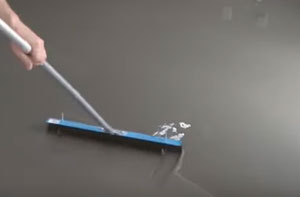
Latex floor screeds are easy to apply. To achieve good adhesion, the existing floor should be cleaned and primed first. After that, the latex mixture is poured onto the floor and spread out evenly with the help of a trowel. Once the mixture has dried, it creates a level, smooth surface suitable for tiles, vinyl, or other floor coverings.
One of the standout features of latex screeds is their fast drying time. Traditional screeds take days to dry, but latex screeds can be walked on after only a few hours. This makes them an excellent choice for both commercial and residential projects in Chelsea, where time is often a critical factor. (Latex Floor Screeds)
Multi-Coloured Floor Screeds
If you're looking to add some personality and practicality to your space, multi-coloured floor screeds are a brilliant option. Not only do these decorative screeds boast impressive durability, but they also have a striking design that creates a seamless flooring solution. Whether you're outfitting a commercial space, an industrial area, or even a contemporary home in Chelsea, these multi-coloured screeds blend style with functionality beautifully. Plus, with their vibrant finishes, you can customise them to suit your own taste or any branding needs you might have.
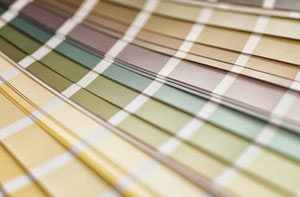
The versatility of multi-coloured floor screeds is truly remarkable. They work wonderfully in high-traffic spaces due to their durability against wear and tear. Their seamless finish also makes them easy to clean and maintain. In commercial environments, vibrant colour schemes can result in eye-catching interiors or underscore different areas within a room. Conversely, in residential settings, gentle tones and elaborate patterns can lend a contemporary elegance to spaces like kitchens, bathrooms, and living areas.
Beyond their striking appearance, multi-coloured screeds are a durable and practical flooring solution. Built to endure even the toughest environments, they're a long-term investment. What's more, they can be adapted to meet specific needs, such as slip resistance or protection from spills and chemicals. Whether you're looking to revitalise a worn floor or create a standout design, multi-coloured screeds are ideal for homes and businesses in Chelsea. They seamlessly blend style and function, turning any space into something extraordinary. (Tags: Multi-Coloured Floor Screeds Chelsea).
Screed Floor Removal Chelsea
Stripping away existing layers of screed from surfaces is an essential process in construction and renovation. This is done by screed floor removal. Renovation or upgrading of a floor requires this essential procedure. It facilitates the preparation of the surface for the new flooring material or other improvements.
Screed floor removal is an intricate task that's best left to specialist contractors who have experience in this area. Their proficiency ensures that the old screed can be eliminated successfully and safely, laying the groundwork for a new lease of life for the floor. The value of this fresh start is manifold, including changes in design, upgrades and repairs.
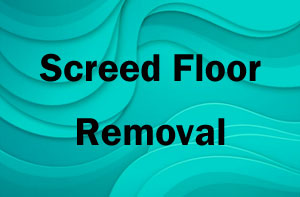
The process of screed floor removal involves the use of specialist equipment and techniques that are tailored to the particular task at hand. Considering the type, thickness, and the applied surface of the existing screed is imperative. Effective removal with minimal damage to the underlying structure is ensured by careful attention to detail.
One of the main benefits of removing floor screed is that it allows you to deal with any underlying problems that may have developed over time. If the old screed layer is damaged, uneven, or otherwise compromised, its removal allows for a detailed examination of the substrate. This inspection enables contractors to ensure that the substrate is structurally sound and ready for the installation of new flooring materials.
Additionally, screed floor removal is a major preparatory step for implementing underfloor heating systems in Chelsea. To install heating elements effectively, contractors first ensure a clean and level surface by removing the pre-existing screed. This method enables the creation of an underfloor heating setup that is not only efficient but also effective, enhancing the space's energy efficiency and comfort.
In terms of sustainability, screed floor removal aligns with the principles of reusability and waste reduction. Recycling or repurposing extracted material significantly reduces the environmental burden of its removal.
In conclusion, within the field of construction and renovation, screed floor removal is a complex and crucial process. To ensure the safety and integrity of the underpinning structure while negotiating the challenges of of removing old layers of screed, the expertise of professional contractors is required. Contributing to the creation of hard-wearing, efficient, and visually pleasing flooring solutions in a variety of residential and commercial settings in Chelsea, screed floor removal enables a fresh start for the floor. (27543 - Floor Screed Removal Chelsea)
Screeding Enquiries

Current floor screeding enquiries: Cameron Evans and Abigail Evans recently asked for an estimate for screeding over an old concrete floor in Palace Green. Emily Lawson from Palace Green asked the question "is there anyone who does floor screeding near me?". Ashley Collins from Clem Attlee Court was looking for a floor screeder to lay a flow screed in 3 rooms of her property. Jose Rees in Abbots Manor was looking for a local floor screeding company to lay a liquid screed in two rooms of his property. Victoria Berry from Clem Attlee Court asked the question "is there anyone who does floor screeding near me?". Sara Robertson recently asked for a price quote for screeding a lounge and kitchen floor in a bungalow in Worlds End Estate. Alexander Allen in Sands End was looking for a local floor screeding company to lay a liquid screed in two rooms of his property. James and Danielle Robinson recently enquired about the possibility of screeding a cellar floor in Palace Green. Samuel and Brittany Moore recently requested an estimate for screeding the floor of a living room in Palace Green. Anne Palmer in Worlds End Estate was looking for local floor screeding companies nearby. Jason Dean in Walham Green was looking for a local floor screeding company to lay a liquid screed in two rooms of his property. Amanda Harper recently asked for a price quote for screeding a lounge and kitchen floor in a bungalow in Churchill Gardens. Susan Young and Christian Young recently enquired about the possibility of screeding a property extension floor in South Kensington. These local homeowners searched for "floor screeding near me" and located this website on either Bing, Yahoo or Google.
Chelsea Screeding Related Tasks

There is a variety of work that can be completed by your local Chelsea floor screeding company including underfloor insulation, screed floor removal, unbonded screed, screed pump hire, basement floor screeding, cheap floor screeding, concrete floor moisture testing, shop screeding in Chelsea, pumped floor screeds in Chelsea, professional floor levelling services, screed surveys & testing, substrate floor preparation in Chelsea, sand and cement floor screed, domestic screeding, floor noise reduction, floor screeding price quotes in Chelsea, concrete floor toppings, concrete pumping, lightweight screeding, decorative floor screeding in Chelsea, screed laitance removal, waterproof screeding, screed flooring, acoustic flooring, floor screed testing, floor renovation, floating screed, coloured floor screeding, underfloor heating installation, industrial screeding, and more floor screeding tasks. These are just a selection of the activities that are accomplished by those installing screeding. Chelsea providers will be delighted to keep you abreast of their whole range of services.
Floor Screeding Near Chelsea
Also find: Churchill Gardens floor screeding, Clem Attlee Court floor screeding, Chelsea Harbour floor screeding, Sands End floor screeding, Palace Green floor screeding, Parsons Green floor screeding, Abbots Manor floor screeding, Earls Court floor screeding, Worlds End Estate floor screeding, Walham Green floor screeding, South Kensington floor screeding, Knightsbridge floor screeding, Coleridge Gardens floor screeding and more. There are contractors who specialise in screeding in most of these towns and villages. Possessing the skills and expertise required for delivering the best quality flooring services, these experienced professionals are well-equipped for this kind of job. In the realm of screeding for both commercial and domestic properties, they are highly skilled, guaranteeing top quality work. Local home and property owners can get screeding quotes by clicking here.
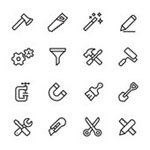
Other Trades Chelsea: Chelsea home improvements typically require the expertise of various different tradesmen, and despite the fact that you are currently focused on identifying floor screeding in Chelsea, a plumber in Chelsea, parquet flooring in Chelsea, a carpet fitter in Chelsea, a carpenter in Chelsea, a handyperson in Chelsea, a plasterer in Chelsea, a stonemason in Chelsea, partition wall installation in Chelsea, garden clearance in Chelsea, SKIP HIRE Chelsea, a flooring expert in Chelsea, damp proofing in Chelsea, roof repairs in Chelsea, could also be needed at some stage during your venture. To submit enquiries and get quotations, just click on the highlighted links.
More: Floor Levelling, Screeding Services, Self-Levelling Screeds, Floor Screeding, Screeding Services, Floor Screeding, Decorative Screeding, Screeding, Floor Screeding, Screeding Contractors, Floor Levelling, Residential Screeding, Flooring Contractors, Screeding Specialists, Residential Screeding, Flooring Contractors, Floor Screeding, Screeding Contractors, Screeding Companies, Decorative Screeding, Screed Floors, Floor Levelling, Flooring Contractors, Floor Levelling, Screed Flooring, Flooring Contractors, Commercial Screeding, Floor Screeders, Screeding Contractors, Floor Levelling Services, Screed Floors, Screeding Companies, Floor Levelling, Polished Screeding, Driveway Builders, Concrete Driveways, Concrete Driveway Contractors.
Floor Screeding Estimates Chelsea - Screeder Chelsea - Screeding Services Chelsea - Fast-Dry Screeding Chelsea - Floor Screed Companies Chelsea - Industrial Screeding Chelsea - Floor Screeding Near Me - Screeding Chelsea - Floor Screeding Companies Chelsea


